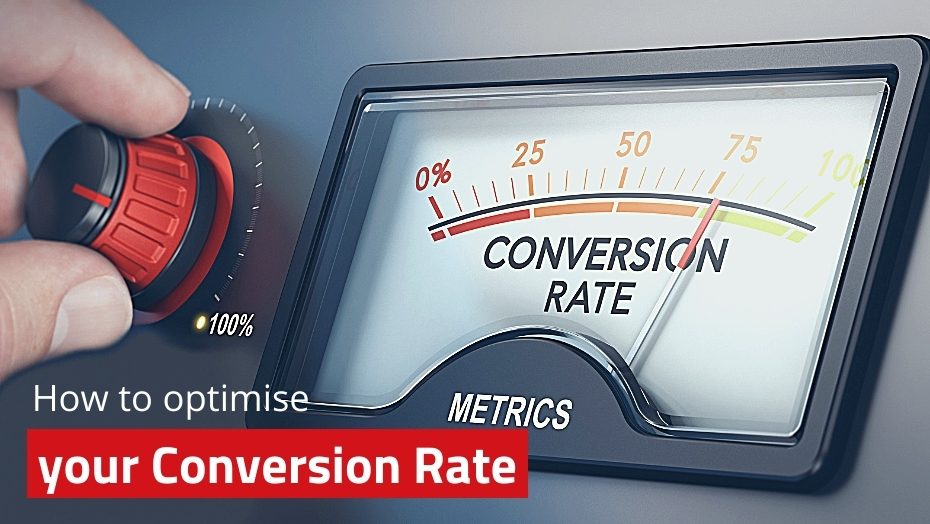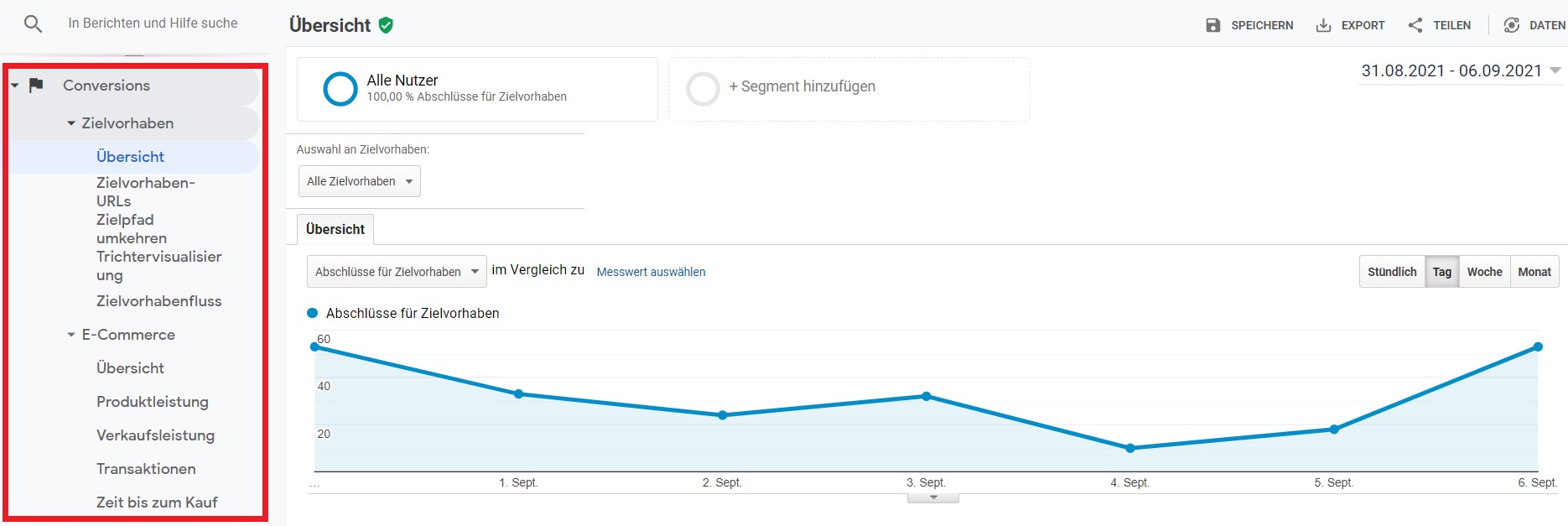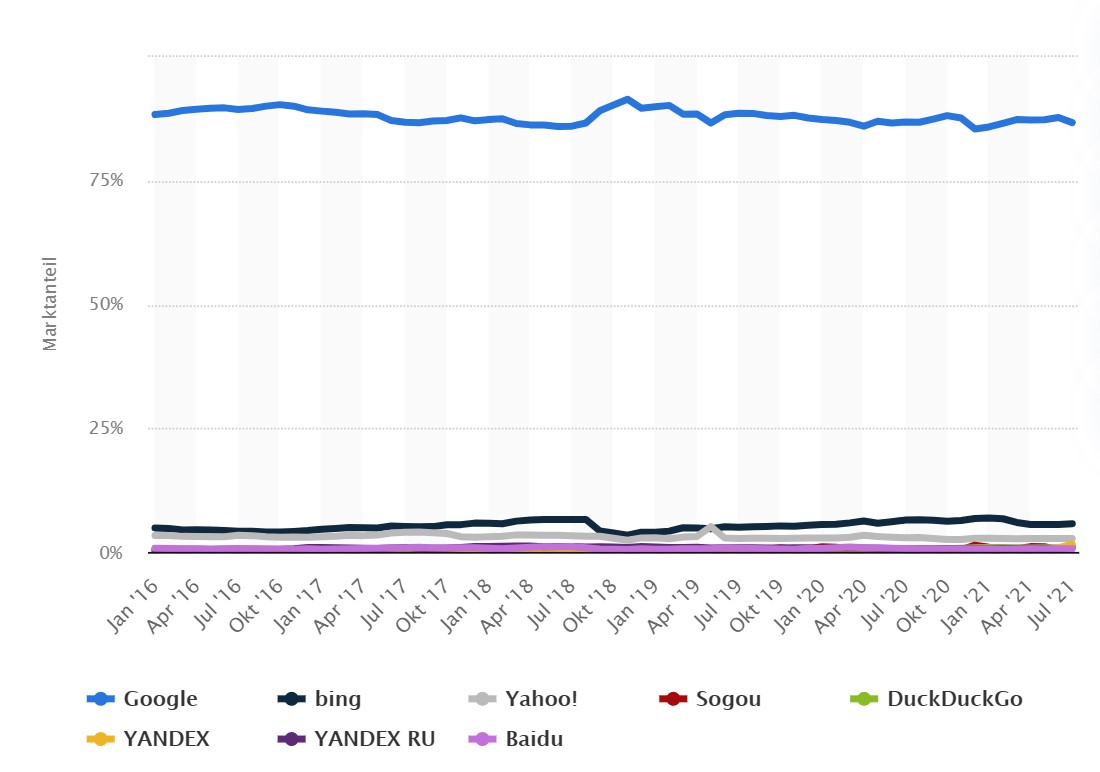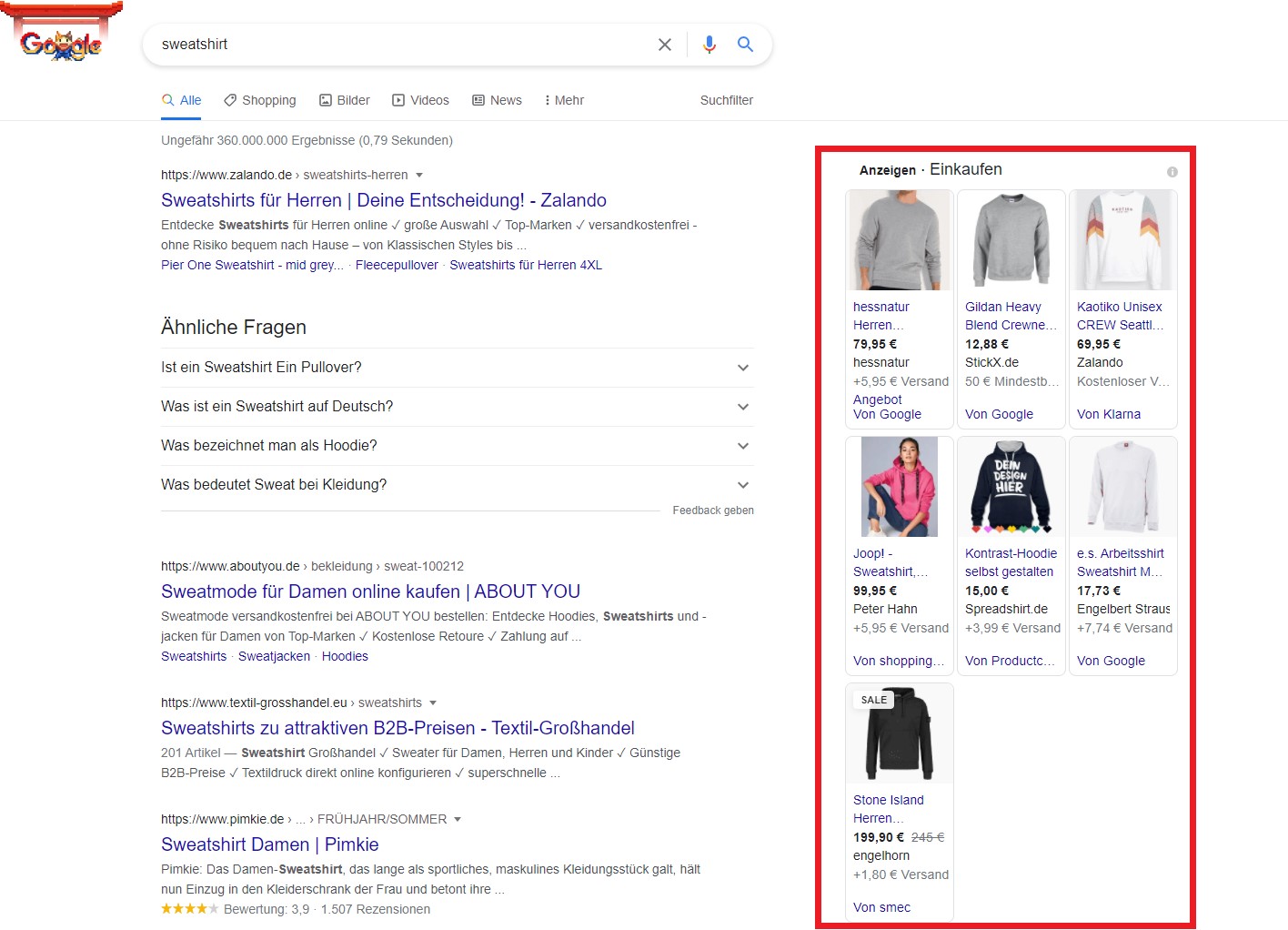
Many shop operators know the problem: the number of visitors to the online shop is right, but it is not reflected in the sales. Fortunately, there are numerous ways to increase the conversion rate and thus also the sales of an online shop. In this article, we give a basic overview of the importance of the conversion rate in e-commerce. We also show which factors can be used to optimise the conversion rate in the areas of hosting configuration, user experience and marketing.
What are conversions?
Conversions are processes in which recipients of messages carry out an action desired by the sender. This can be, for example, the registration for a newsletter, the download of a file or the purchase of a product in an online shop. Thus, a conversion is always also a process of transformation in which an interested person becomes a reader or buyer, for example. In a next step, it is of course also possible for readers to become subscribers or buyers to become customers.
What is the conversion rate?
The conversion rate is a key figure that is particularly important in e-commerce, but also in performance marketing. With its help, economic success can be measured by comparing the measured values with the KPIs (Key Performance Indicators). The KPIs are targets that are set in advance of a measurement. If the KPIs are achieved or even exceeded after analysing the measurement results, a positive balance can be drawn.
The conversion rate in e-commerce
In the field of e-commerce, conversion often defines the completion of an order process in an online shop, i.e. the purchase of a product. However, other conversions can also be defined, such as the registration for a product newsletter. In e-commerce, online purchases are referred to as macro-conversions, while registrations for newsletters are referred to as micro-conversions.
The more users complete a conversion, the higher the conversion rate. In e-commerce, this is directly related to the sales figures of a shop. Here, a further distinction is made between the order conversion rate (ratio of orders and visitors), the basket conversion rate (ratio of orders and shopping baskets) and the order abandonment rate (ratio of orders and order processes started). The goal of a shop operator is always to increase conversions in order to generate higher sales.
The conversion rate of online shops can be specifically improved with the help of various methods and means. In the following, we reveal what these are.
Hosting configuration
The technical and infrastructural basis of a successful online shop is the hosting. Although it may seem rather unspectacular to some at first glance, hosting is a complex area that already holds a lot of optimisation potential and is also reflected in a higher conversion rate.
Hardware usage
The hardware is the technical basis of hosting and as such also enables the high-performance operation of an online shop. Depending on the setup and the hardware components used, clear performance potentials already become apparent in this first step.
But how can you determine which and how many resources are needed for this? To answer these questions, you must first define the needs of your online shop. This includes, for example, which shop system you use, how high the daily visitor numbers are on average and how extensive the product portfolio is. With the Hardware Finder from maxcluster you can find out in a few minutes which hardware configuration optimally fits your requirements.
Set up HTTPS encryption
Since the DSGVO came into force in May 2018, encrypted transmission of personal data is legally mandatory in Germany and Europe. This can be set up via TLS/SSL certificate. Operators of online shops also benefit from encrypted data transmission with regard to the conversion rate, as this has a positive effect on the customers' feeling of security when shopping in the shop. At maxcluster, a free Let's Encrypt certificate can be integrated with just a few clicks.
Measure and optimise loading times
Numerous studies such as this one from Pingdom prove a connection between the loading time of an online shop and its conversion rate. The faster an online shop loads, the more conversions are statistically achieved. It is therefore advisable to keep the loading time as low as possible. To measure the speed of a shop, various tools such as Google Analytics, PageSpeed Insights, Pingdom and many more can be used.
mod_pagespeed
In addition to the PageSpeed Insights analysis tool, Google also offers the so-called PageSpeed Module. If this module is installed on a web server, any potential for performance optimisation discovered with PageSpeed Insights is automatically implemented.
Please note: Since mod_pagespeed itself has a high power consumption and does not function optimally when implemented on NGINX web servers, in some cases it triggers more performance problems than it solves. Therefore, we do not advise our customers to use PageSpeed Module.
To increase the performance of a shop in general, both the application and the frontend as well as the server can be optimised accordingly. In some cases, a bottleneck also triggers a specific performance problem. In this case, its cause can be identified with the help of a profiling tool.
If you would like to learn more about the topic of loading times and performance of online shops, take a look at our article on the topic of Performance optimisation of Magento shops. In it, we give an overview of which factors have an impact on the loading time, which tools support the analysis and what you can specifically do to increase the performance of your online shop.
Managed Hosting at maxcluster
At maxcluster we attach particular importance to ensuring that your online shop is always available and remains fast and performant even with increasing traffic. Therefore, our service team of trained Linux administrators is not only available to our customers for questions and problems at any time, but also proactively fixes any performance problems that occur. In our Managed Centre, various services to increase performance are already pre-configured and can be individually adapted there.
If you have any questions about the hosting configuration at maxcluster or our e-commerce stack, we would be happy to hear from you by e-mail at beratungmaxcluster.de or by phone at +49 5251/ 41 41 30.
Improve User Experience
Just as in brick-and-mortar retail, it is also crucial in e-commerce to offer users a unique and interesting shopping experience. For this, an appealing digital environment must be created with the online shop. If a visitor leaves the shop while browsing or aborts the ordering process, this can be an indication of a negative user experience. It is therefore advisable to analyse and test your own shop from the perspective of the target group in order to eliminate possible disruptive factors even before the release or relaunch.
Choose an appealing design
In addition to the pre-configured standard themes, shop systems usually offer a wide range of other storefront themes that allow for individual design. It is important to choose a design that matches the products offered and that neither bores nor visually overwhelms the user. Here, too, it is advisable to create the design from the perspective of the target groups.
By the way, the choice of a storefront theme also has an impact on the performance of the shop and should therefore also be checked from this point of view. In addition, the storefront theme is also a relevant SEO factor. Due to the mobile-first principle, the use of a progressive web app may also be worthwhile.
Create suitable content
In most cases, users decide on the basis of their first impression whether they use an online shop or leave it again immediately. For this reason, it must already be apparent to the visitor in the visible area of the start page whether the shop is relevant to his search. This is particularly successful with the integration of relevant content. Use images that authentically reflect your portfolio. In addition, you can use concise, catchy titles and headlines to point out different product categories and offers already on the start page.
When clicking on a specific product, the text content becomes more important for the user. In addition to high-resolution images that show the product in action and from different perspectives, it is the product description that moves the prospective customer to make a decision in case of uncertainty. Communicate the technical components of your product, highlight the purchase benefits (e.g. free shipping or guarantees) and maximise transparency by stating delivery times, availability and more.
Specify alt texts.
Insert alt texts (short for "alternative texts") with all image files that you have integrated in your shop. Alt texts have the function of describing image content as accurately as possible in just a few words. On the one hand, this has the advantage that users learn something about the image contents if the image display is not possible for some reason. On the other hand, alt texts are also important for screen readers, as these capture the texts and read them aloud instead of the image. Since alt texts can increase the thematic relevance of a webpage, they are also a relevant SEO factor according to Google.
Create clear navigation structures
Before a user buys his desired product, he must first find it. Once the first stage of the customer journey has been mastered with an appealing design and relevant content, it is important to keep the visitor in the shop until the purchase is completed. Before launching an online shop, its structure should therefore also be tested from the user's perspective. For example, you can use test groups to evaluate whether users can find their way around the shop right away and quickly reach their destination when searching for certain products.
The structure of an online shop goes far beyond clear menu navigation. If a search function is integrated in the shop, the user usually finds what he is looking for very quickly. For this, it is necessary that the search leads to the desired result even despite the use of synonyms or small spelling mistakes. With the help of sensible product categories and filters, you can also specifically suggest alternative products to the visitor that match their search criteria. A versatile solution is, for example, the open source search engine Elasticsearch.
The checkout
Even if a user has already decided on a product and placed it in the shopping cart, there is a risk that he or she will decide against the purchase at the last moment and bounce. According to a study by the payment platform Stripe, 21% of users abandon a purchase process if it takes longer than a minute. It is therefore advisable to keep the payment process as streamlined, convenient and uncomplicated as possible. Here's what you can do:
- User account: Do not make the creation of a user account a prerequisite for completing a purchase. Otherwise you run the risk that the user will switch to the competition. You can make the creation of a user account optional, e.g. by waiving the shipping costs or offering a one-time discount on the order. In addition, you can offer customers a quick sign-up via social media, Google account or PayPal to save time.
- Automation: Play error messages as specifically as possible and in real time if there are incorrect entries in the ordering process. In this way, the user can react directly and adjust their details. Enable your customers to automatically adopt the billing address as the shipping address and also offer to save the payment data for future use.
- Follow-up actions: If a customer is about to close the tab with the shopping cart or the payment process, you can give them one more pause with a pop-up window. An integrated voucher can be an additional incentive to buy. If a potential customer has already left the shop, he can be reminded afterwards with an abandoned cart e-mail that there are still some products waiting in his shopping cart.
- Payment: Offer your visitors as many payment options as possible (e.g. prepayment, purchase on account, credit card, PayPal, Apple Pay or Google Pay) so that they don't have to leave their comfort zone when choosing a payment method.
- Mobile Optimisation: Remember that many users nowadays shop via tablet and smartphone. If the checkout system is not stable on mobile devices, this is also a reason for users to cancel an order process.
- Security and data protection: Especially in Germany and Europe, the handling of personal data is a sensitive issue. Therefore, ensure secure shopping and be transparent with your users about data processing.
Create opportunities for interaction
Increase the touchpoints with your prospects, buyers and customers by creating opportunities for interaction. For example, you can provide targeted support to users via a chat function already during the search process and thus possibly bring about a purchase decision.
Product reviews and ratings are also a proven means of creating trust in e-commerce. This gives buyers the opportunity to provide detailed feedback on the products. In addition, reviews and ratings also influence the purchase decisions of potential customers.
Keep in touch with customers even after they have bought a product, e.g. by offering them to participate in usability surveys on product quality, delivery service, etc.. In this way, you will receive feedback on how to improve your products and services in order to increase customer satisfaction in the long term.
Marketing measures
There are many ways to increase the conversion rate with the help of targeted marketing activities. These include search engine, social media and influencer marketing.
Conversion tracking and retargeting
With the help of conversion tracking, shop operators can monitor the conversions of their shop in real time and over longer periods of time. In this way, success measurements are carried out and the effectiveness of sales-promoting measures is proven. Conversion tracking can be configured via various tools such as Google Analytics or Google Ads. In Google Analytics, individual e-commerce parameters can be set in addition to the target intention, paths and URLs.
 Conversion Tracking via Google Analytics I Source: maxcluster
Conversion Tracking via Google Analytics I Source: maxcluster
Retargeting refers to a personalised targeting strategy based on embedding a pixel code in the programme code of a website. With the help of the pixel, users are marked with a cookie when they visit the page. If a user leaves an online shop before completing a conversion, personalised ads can be played to them later via Google Ads or social media advertising. These then contain, for example, items placed in the shopping basket or results of the product search. This increases the chance that the user will complete the conversion at a later time. At the same time, however, the risk increases that the user will lose interest more quickly. Retargeting should therefore be used with caution.
Conversion tracking and retargeting are complex processes that we have only touched on very briefly in this article. If you are interested in a more in-depth article on these topics, please feel free to send us your suggestions by e-mail to marketingmaxcluster.de.
SEO
Nowadays, no professionally run website can do without search engine optimisation. In the meantime, new professions have developed around this topic and entire departments or even agencies deal exclusively with it. The reason: a search engine optimised website provides you with sustainable organic traffic.
The biggest player on the international search engine market has been Google for many years. In terms of all search queries received, Google had a market share of around 87% internationally in July 2021. In Germany, it was even 91.2 % in the aforementioned month. In concrete figures, this means that Google receives around 12.4 billion search queries every day. Nevertheless, it can be worthwhile to consider optimising the online shop for other search engines such as Bing, Yahoo or DuckDuckGo. Although their market shares are far below Google's (Bing's share in July 2021, for example, was 5.7%), the daily incoming search queries here are also in the eight- to nine-digit range.
 Market shares of search engines in the international space (2016-2021) I Source: statista
Market shares of search engines in the international space (2016-2021) I Source: statista
Given the market shares, it is not surprising that 76 % of all online shoppers start their search for products on Google. If you want users to find your online shop this way, it must appear as high as possible in the ranking. The higher your online shop appears in the results for searches that match your product range, the more likely it is that users will click on the relevant link. Here are a few quick facts about search engine ranking and how you can influence it:
- Search engines use bots to crawl web pages on the web and then deposit them in the search index.
- The algorithms index websites based on various criteria. These include, for example, the quality of the content, mobile optimisation, the use of HTTPS, the loading time or the quality of the HTML code. The more of these criteria a website fulfils, the better its ranking.
- The quality of the content is in turn divided into different segments: In addition to the use of relevant keywords, readability as well as topicality and uniqueness, the algorithm also analyses inbound and outbound links, multimedia content, URL and meta description.
- If your website appears high up in the search results, you have done a good job. However, this condition is not always permanent, because websites are re-crawled at regular intervals. Google also changes the parameters of its algorithms from time to time. SEO is therefore an ongoing process.
Although Google still keeps the functioning of its algorithms a big secret, the company at least provides basic insights into the search function.
Content tips for your SEO.
- Analyse the search volume of your keywords, e.g. using Google Trends, to better assess their relevance.
- Carry out keyword research before publishing content to discover thematically suitable alternatives and synonyms. By integrating these into your content, you increase the search volume of your products. Tools such as Sistrix or ahrefs can support you in this.
- Integrate your keywords in the slug of your URL.
- Check your content regularly after publication to make sure it is up to date and adjust it if necessary to maintain or improve your ranking.
SEA
SEA stands for Search Engine Advertising and refers to the placement of advertisements in the context of a search engine. The principle is quite simple: if a user enters a search term in a search engine, thematically appropriate ads are displayed in the direct viewing area at the top of the search results.
 Ads for products are played above or next to organic search results I Source: Google
Ads for products are played above or next to organic search results I Source: Google
To place an ad on Google, the Google Ads service is used, for example. Bing's equivalent service is called Microsoft Advertising. If Google is used as a starting point, the conversion target must first be defined and the radius (local or global) in which the ad is to be displayed. In the next step, advertising messages, target URL and optional image material are deposited. The budget is then set before publication. However, this can still be flexibly adjusted in the course of a campaign. However, since it is an auction model, it is not guaranteed that your ad will appear first among the ad spaces.
Billing is based on the CPC model (cost per click). If a user clicks on the ad during his search, he will be redirected to the stored target URL, just as in organic search. Every time this happens, Google automatically charges a certain amount.
The relation of SEO and SEA.
Using SEA gives you more visibility and traffic over the period of your campaign, but no long-term advantage over competitors. Buying an ad has no effect on your website's position in the search engine rankings. Although SEA leads to faster results, SEO is therefore the more sustainable method of conversion optimisation.
Content multipliers
Most shop operators know their target groups well and know which channels they use. Text, image and video content produced for an online shop can be adapted for social media profiles or product newsletters and used secondarily in just a few steps. For video assets, tools like a video background remover can help create cleaner, more engaging visuals tailored for different platforms.
Social Media
If your target groups are active on certain social media platforms, it is also worthwhile for you and your brand(s) to be present there. Platforms such as Facebook, Instagram or Pinterest not only offer you the opportunity to organically multiply your reach through secondary use of your content, but also enable direct communication with interested parties and customers. In addition, the aforementioned platforms offer a variety of advertising formats with specifically configurable parameters for narrowing down the target groups. Some even have integrated direct shopping functions for users.
Influencer cooperations
Influencers serve different segments of followers depending on their thematic orientation and are also perceived as opinion leaders by the majority of them. If the thematic orientation of an influencer coincides with that of an online shop, a cooperation can be a desirable goal for optimising the conversion rate. In this way, influencers can contribute to increasing awareness as brand ambassadors and also strengthen trust in the brand through formats such as product testings.
Newsletter
Email marketing is a suitable instrument to inform potential buyers as well as existing customers about new products, offers or special promotions. Tools such as Klaviyo or MailChimp can be easily integrated into many shop systems via an interface and support you in automating your product marketing. Also use functions such as A/B testing to get to know the needs of your target groups even better.
Offers and promotions
Whether it's a summer sale, winter sale, Black Friday or Cyber Monday: with the help of offers and promotion days, traffic to online shops can be increased in a targeted manner at times. However, it is important to bear in mind that increased access figures also mean increased demand for resources. At maxcluster, customers can therefore flexibly adjust their hosting configuration at any time during planned special promotions. By the way, we have compiled some tips for increasing sales on Black Friday and Cyber Monday in another blog article.
Conclusion
If you want to sustainably increase the conversion rate of your online shop, you can improve the shopping experience of your potential customers on various levels. With the right hosting configuration, a solid basis is laid for fast and high-performance operation in general, but also on individual days with more hits such as Black Friday.
In addition, the user experience can be improved through an appealing design, clear shop structures and relevant content. Data protection and transparency during check-out as well as product reviews and ratings also give potential customers a feeling of security and create a basis of trust.
In marketing, there are numerous ways to optimise conversions. SEO and SEA already start where the product search begins. Social media, email marketing and cooperation with influencers quickly become reach multipliers with an influence on the conversion rate if handled correctly.




